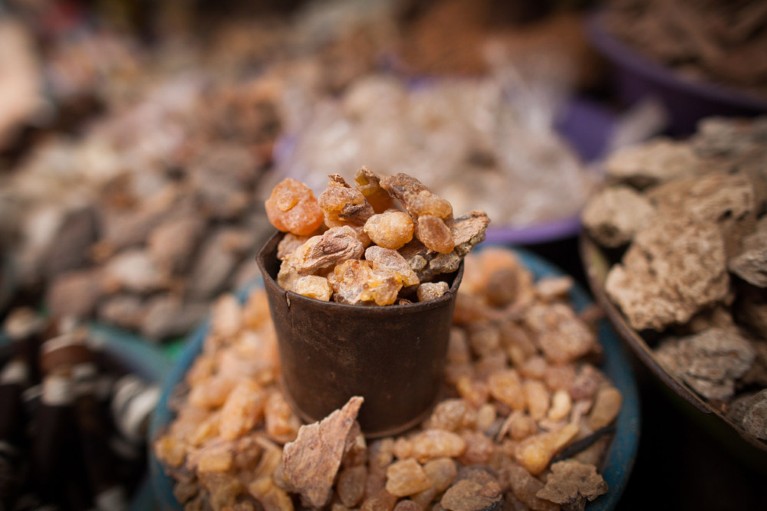
Myrrh could help treat symptoms of a faulty liver.ANDREW MCCONNELL / ALAMY STOCK PHOTO
Known for its multiple beneficial properties, the dried sap of Commiphora molmol, a native shrub in the Arabian Peninsula and Africa, has been used in traditional medicine for centuries. Recently, KAIMRC’s Sultan Alqahtani, in collaboration with Beni-Suef University in Egypt, found that this resin, known as myrrh, counteracts the damaging effects of ammonia excess, a common consequence of cirrhosis and other liver diseases.
When the liver cannot remove harmful substances sufficiently, they build up in the bloodstream. For example, ammonia, a by-product of protein digestion, needs to be converted into urea in the liver and eliminated via the kidneys. Accumulation of ammonia in the blood, called hyperammonaemia, is toxic to nerves and can lead to a decline of brain functions known as hepatic encephalopathy.
Since current therapies to reduce ammonia levels in the blood have had limited effects, the team looked for a remedy in myrrh, whose antibacterial, anti-inflammatory, antioxidant, sugar-reducing and liver-protective properties have been used traditionally for the treatment of several diseases. The researchers induced hyperammonaemia in rats and administered an oral dose of concentrated C. molmol resin powder for eight weeks. Body weight, blood ammonia levels and other major liver and blood physiological parameters worsened in hyperammonaemic rats not treated with myrrh, but were normal in the treated rats.
Excessive ammonia is particularly dangerous because it provokes the over-production of nitrogen and oxygen free radicals. Free radicals ‘steal’ electrons from the lipids in cell membranes, leading to cell damage.
The scientists found that myrrh induced the production of several antioxidant and detoxifying proteins in the liver, kidneys and cerebrum. In particular, the team suggests that the anti-inflammatory protein Nrf2 plays a key role in this defensive process. In healthy and treated hyperammonaemic rats, Nrf2 is activated by high concentrations of oxygen free radicals and triggers the production of antioxidants, which protect the cells against free radicals. Nrf2 and antioxidant levels were significantly lower in untreated hyperammonaemic rats.
Beyond the rise in Nrf2, C. molmol resin treatment also reduced protein tumour necrosis factor-alpha (TNF-α), which is known to be high in the serum of cirrhotic patients, a condition in which the liver is hardened by fibrous tissue.
Although the precise mechanism of the treatment is still unclear, it might help attenuate the effects of liver disease.


